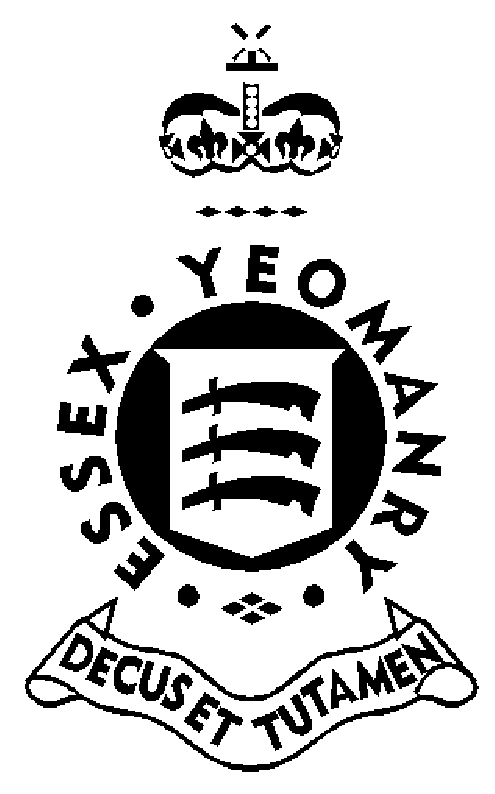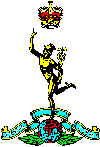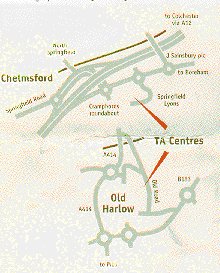


 |
 |
 |
| � |
|
What we're all about.....As part of the 71st Yeomanry Signal Regiment, the men and women of the 70 (Essex Yeomanry) Signal Squadron are trained to operate a purpose built long range high frequency radio system. Shouldering the responsibility to provide communications for both military and civilian authorities in a tactical environment, the Essex Yeomanry play a vital role in national security. If you want to do something different this weekend, why don't you join the team and take up a new and rewarding challenge. | |||||||||||||||||||||||||||||||
History of the Essex YeomanryIn 1794, six Troops of the �Loyal Essex Regiment of Fencible Cavalry� were formed from the Harlow area, to be later renamed �The Essex Light Dragoons�, against threats of a French invasion with landings on the Essex Coast. In 1797 the 1st Essex Yeomanry Cavalry Troop was raised, in Coopersale, followed by the Chelmsford Hundred Yeomanry: by 1798 there were fifteen such Yeomanry Cavalry Troops throughout Essex named, in many cases, after the village, district or landowner where they raised. During 1813 the independent Yeomanry Troops in Essex formed themselves into the Essex Yeomanry Cavalry Regiment. The last of the old Essex Yeomanry Troops disbanded in 1828, but in 1830 the West Essex Yeomanry Cavalry was raised to help the civil powers cope with the widespread agitation in Essex caused by the proposed Reform Bill. In the 1850�s this Regiment expanded to comprise three cavalry and two artillery troops and a band, but was disbanded in 1877, the nadir of volunteering. In 1889 however, Captain RB Colvin (later Brigadier General Sir Richard Colvin, Lord Lieutenant of Essex) raised an Essex Troop of the Loyal Suffolk Hussars, in which served many of the Essex men who subsequently fought in South Africa with the Imperial Yeomanry from 1899 - 1902. It was in 1901 that he raised the Essex Imperial Yeomanry as a fullscale Regiment with four Squadrons. In 1908 the Regiment, as the Essex Yeomanry, became part of the Territorial Force, and in 1909 received from Edward VII it�s Guidon and Regimental motto �Decus Et Tutamen' (Shield and protection). In 1908 also, the Essex Royal Horse Artillery Battery, based at Colchester, was raised out of the Essex Yeomanry. In 1914 the Regiment went to France, where it was in continual action in the 8th Cavalry Brigade until 1918, during the last three years under the command of Lt. Col. FHDC Whitmore (later Sir Francis Whitmore, Lord Lieutenant of Essex 1936 - 50). During the 1914 - 18 War, 467 Officers and men of the Essex Yeomanry were killed and wounded (the seventh highest total of all the Yeomanry Regiments of the United Kingdom), and a total of 134 Honours and Awards were made to Essex Yeoman, including a Victoria Cross. In 1920 the Essex Yeomanry was again as a Cavalry Regiment of the TA, but converted to Artillery in 1921, becoming the 104th (Essex Yeomanry) Brigade RFA. In 1932 the Essex Royal Horse Artillery Battery joined the Regiment, which became the 104th (Essex Yeomanry) RHA. In 1939 the Territorial Army was doubled and a second Essex Yeomanry Regiment was formed as the 147th (Essex Yeomanry) Regiment RHA, later to be re-designated as Field Regiment Royal Artillery. The first line Regiment went to the Middle East in 1940 with the 1st Cavalry Division, and served in Palestine before taking part in most of the Western Desert battles (notably Alamein and throughout the Siege of Torbruk) and in the Italian campaign, until it was disbanded in Austria in 1946. The 147th Regiment landed on the beaches of Normandy on D-Day, 1944, and fought with the 8th Armoured Brigade as a spear-head unit through France, Belguim and Holland and on into Germany, being disbanded in 1946. In 1942 an Essex Yeomanry Battery from 104th Regiment RHA was sent to Burma with the 7th Armoured Brigade to cover the withdrawal from Rangoon to Imphal. This Battery was subsequently expanded into another RHA Regiment (147 RHA). In 1942 the 147th Regiment and the 86th (Hertfordshire Yeomanry) Field Regiment RA jointly provided the basis for a new 191st (Herts and Essex Yeomanry) Field Regiment RA which fought from Normandy to Holland before being disbanded in 1945. After the 1939-45 War, the Essex Yeomanry was re-raised in 1947 as 304th (Essex Yeomanry) Field Regiment RA (TA). A new Guidon was presented to the Regiment in 1949 to replace the original one which had been destroyed by enemy action when Chelmsford was bombed in 1943. In 1953 the Regiment received the special honour of the right to incorporate the RHA (Royal Horse Artillery) in it�s title. In 1967, when the Territorial Army was decimated, the Essex Yeomanry undertook a home-defence infantry role in the TAVR, it�s Gunners remaining only as a Cadre; but in 1969, after powerful representation from County and Military quarters, the Regiment�s unique record assured its survival (unlike many other Yeomanries) and it achieved a more active and purposeful role as a Royal Signals Squadron (TA). Initially the Squadron formed part of 71st (Yeomanry) Signal Regiment alongside 68 (Inns of Court and City Yeomanry) Signal Squadron and 265 (Kent and County of London Yeomanry) Signal Squadrons. However in November 1992, as a result of a further reorganisation of Territorial Army, the Squadron, due to its being in Eastern District, was placed under the command of 38 (Eastern) Signal Regiment (V) based in Sheffield. The Squadron rejoined 71st (Yeomanry) Signal Regiment in 1995 after following a further reorganisation. In May 1993 the Squadron moved from Victoria Road South, in the heart of Chelmsford, to a new purpose built TA Centre in Springfield Lyons, just to the north of Chelmsford. As before the centre is shared with �C� Company, 6th Battalion, Royal Anglians. The Squadron has the distinction of holding the freedoms of Chelmsford and Colchester. Today the Essex Yeomanry serves a 70 (Essex Yeomanry) Signal Squadron of the Territorial Army and has Troops in Old Harlow and Chelmsford. The role of the Squadron is to provide National Communications to aid the Civil Authorities. This entails providing communication facilities for such events as major flooding, air crashes, refugee relief or any other civil emergency.
Want to know more?Simply give us a call on 01245 462 298 during normal working hours and we'll do our best to answer any questions you may have.


|